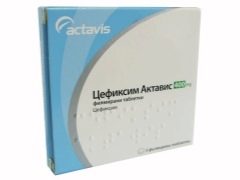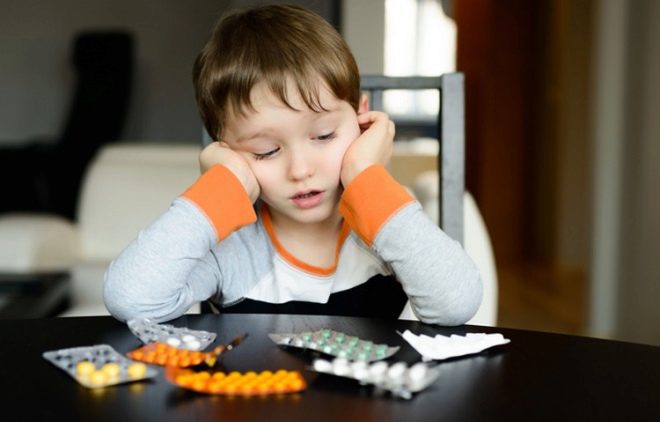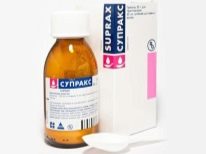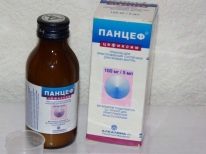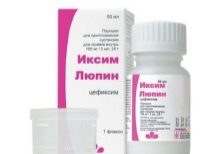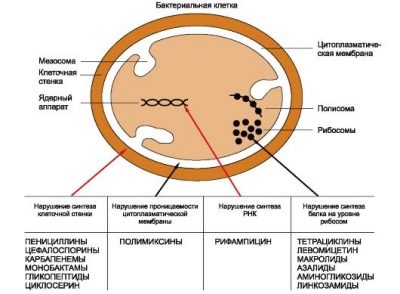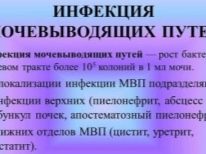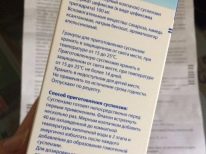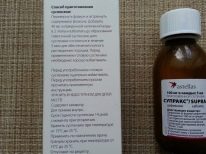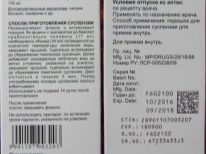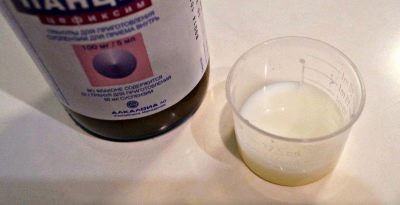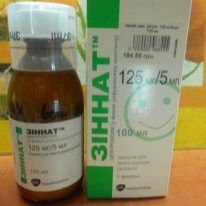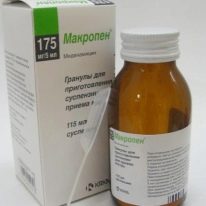Cefixime for children: instructions for use
Cefixime is a group of cephalosporin antibiotics. This substance belongs to the third generation and can be taken orally, therefore it is in demand in the treatment of patients of any age.
Medicines with this name are not released, but cefixime is the main component of several modern antibiotics, which have a rather broad spectrum of action and are used by children.
Preparations
Cefixime is the active substance of some drugs.
- «Suprax». This drug is available from the Netherlands in two forms. One of them is granules, which, after adding water, become a white-cream strawberry suspension containing 100 mg of cefixime in every 5 ml. The second form of the drug is white-purple capsules, each of which contains 400 mg of antibiotic. In addition, there is "Supraks Solutab"- a preparation in the form of strawberry soluble tablets containing 400 mg of cefixime in one piece.
- «Pancef». For the youngest patients, this drug from the company from Macedonia is represented by granules. After adding water to the inside of the vial, an orange-white-yellow suspension is obtained with a dosage of 100 mg per 5 ml. For older children, Pancef is available in oblong tablets with a creamy white coating. Each such tablet is a source of 400 mg of antibacterial substance.
- «Ixim Lupine». Unlike previous drugs, this medicine is represented by only one form - it is produced in India in powder form. Diluting such a powder with water, get a yellowish suspension with a strawberry odor, the dosage of the active substance is 100 mg per 5 ml.
Operating principle
Cefixime has a bactericidal effect on a fairly large number of pathogenic bacteria. This substance interferes with the process of membrane synthesis in bacterial cells, which causes the death of the pathogen. It is not affected by enzymes, called beta-lactamases, secreted by some microorganisms, therefore, the effectiveness of cefixime is higher than many penicillin antibiotics.
Receiving drugs based on cefixime helps to overcome the infection caused by pneumococci, Escherichia, Hemophilus sticks, Proteus, Salmonella, Streptococcus, Citrobacterium, Shigella, Gonococcus, Klebsiella, Moraxella and other microbes. However, there are types of bacteria that are insensitive to such drugs, for example, many staphylococci, enterococci and clostridia.
Indications
Drugs that are caused by cefixime are required during the infectious process, if its cause is bacterial flora that is sensitive to the antibiotic. They are prescribed for the following ailments:
- angina;
- antritis, frontitis and other sinusitis;
- laryngitis;
- pharyngitis;
- bronchitis;
- pneumonia;
- gonorrhea;
- otitis media;
- intestinal infections;
- cystitis;
- pyelonephritis;
- urethritis.
From what age is prescribed?
Cefixime containing suspension, which is obtained from the powder form or granules, can be administered even to infants.
This liquid medicine is used from 6 months of age. Solid forms of cefixime-based drugs are prescribed from the age of 12, because they contain a high dosage and have a shell that should not be damaged.
Separately, it should be noted "Supraks Solutab." For suspension prepared from such tablets, age limits are replaced by weight restrictions. This syrup can be given to children whose body weight exceeded 25 kg. If the child weighs less, then only a suspension made of granules or powder is suitable for his treatment.
Contraindications
Cefixime-based antibiotics should not be used by patients who are hypersensitive to any of the components of a selected drug. They should also not be used if the child is allergic to any other cephalosporin preparations or penicillins.
In renal failure, cefixime is prescribed with caution, since the degree of renal impairment affects the choice of dosage. If the child had pseudomembranous colitis, then this also requires increased attention of the doctor when prescribing cefixime.
The control of a specialist is also necessary when treating with a suspension, if the child is diagnosed with diabetes mellitus, since the liquid form usually contains sucrose.
Side effects
Allergic reactions, signs of irritation of the digestive tract, headaches, symptoms of dysbacteriosis, bleeding, cholestasis, candidiasis and other negative changes may occur during the administration of drugs based on cefixime.
With such symptoms, it is recommended to stop giving the child antibiotics and consult a doctor.
Instructions for use
If granules or powder form are selected for the treatment of a child, then you must first add water in the amount indicated in the annotation to the inside of the vial so that a homogeneous liquid is obtained. Before each use of the suspension, the bottle must be shaken, as its components will sink to the bottom during storage. Solid forms are swallowed with water.
The dosage of cefixime for children under 12 years of age should be calculated by body weight, multiplying 8 mg of antibiotic by the number of kilograms. The calculated dosage is divided into two doses or given to the child once. Capsules and tablets in the shell give patients over 12 years of age at the same time every day for 1 piece.
The duration of treatment with cefixime depends on the disease, but most often it is 7-10 days.
Overdose and compatibility
Exceeding the dose of cefixime leads to nausea, constipation, headaches and other ailments. To eliminate these symptoms, It is recommended to consult a doctor for examination and prescription of the necessary symptomatic medications.
As for compatibility with other drugs, there are quite a few limitations for using drugs based on cefixime. For example, such antibiotics should not be given along with certain diuretic drugs, anticoagulants or antacids. Therefore, if a small patient is already taking any medication, you need to talk with your doctor about the possibility of combining it with cefixime.
Terms of sale
Any of the drugs based on cefixime is sold by prescription, so before purchasing "Supraxa"Or another medicine, you must first consult a doctor. The cost of drugs varies depending on the manufacturer and dosage form.
Storage
Granules in a sealed form retain their properties for 3 years (powder "Ixim Lupine"- 2 years) from the date of issue, if stored in a dry place at temperatures below +25 degrees. The suspension prepared from such forms is only valid for 14 days and can also be stored at room temperature.
Shelf life of tablets and capsules - 3 years.
Reviews
About the use of cefixime in different infections in children respond mostly positively. Such antibiotics are praised for a wide range of action, the ability to receive through the mouth (they allow you not to make painful injections), the use of infants and ease of dosing.
The disadvantages of these drugs usually include the short shelf life of the finished suspension, the high price and the frequent occurrence of side effects.
Analogs
Instead of drugs that contain cefixime, other antibiotics such as cephalosporins or penicillins, such as "Zinnat"(Suspension can be given at children's age from 3 months) or" Augmentin "(medicine in the form of suspensions can be used from birth). If you are allergic to these drugs, the doctor will select an analogue from other groups, for example, a suspension "Macropene"Prescribed at any age, or dissolving tablets"Vilprafen Solutab"Used by children weighing more than 10 kg.
In which cases it is necessary to give the child antibiotics will tell Dr. Komarovsky in the next video.
